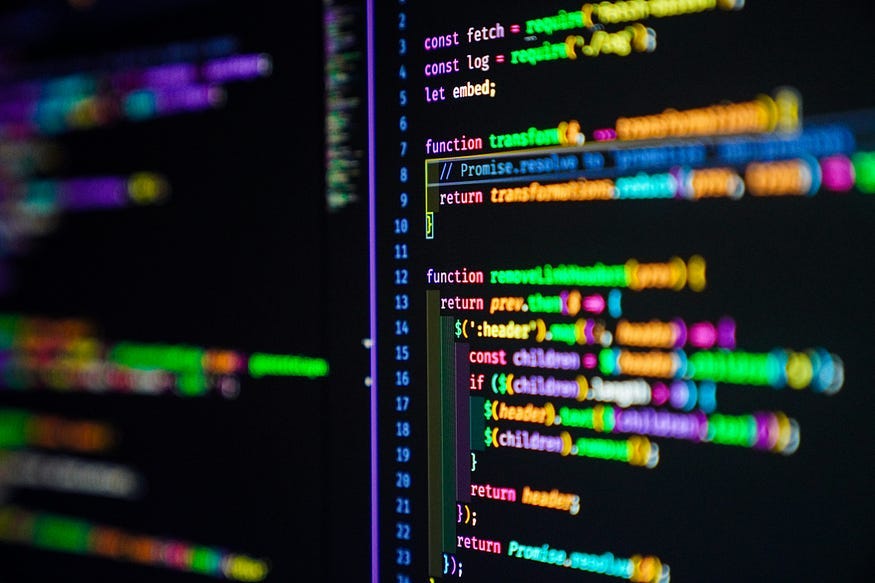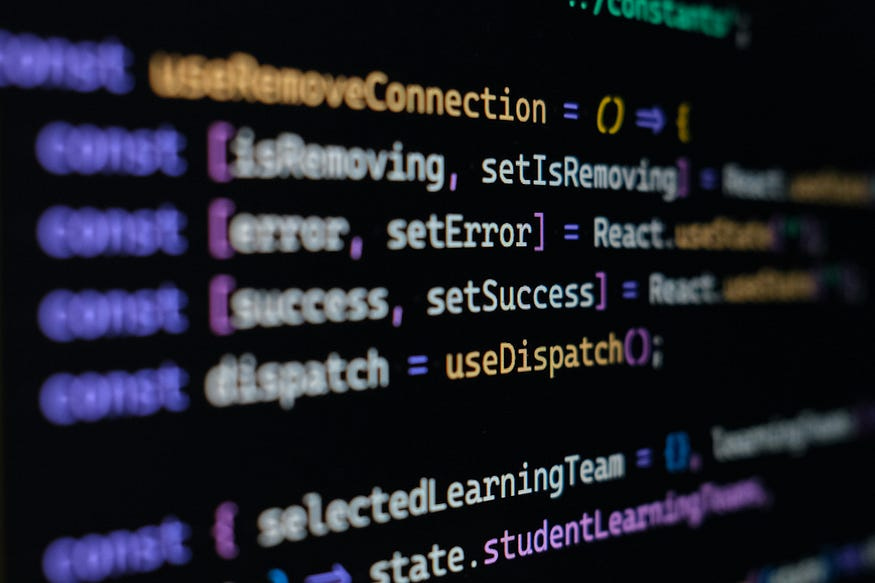Test Planning for software modernization from legacy
Testing from old to new

Modernizing legacy software is a crucial task for organizations looking to stay competitive in today’s fast-paced technological environment. This process involves careful test planning to ensure that the new systems meet current business needs while still providing the functionality that users expect. In this article, we will explore key strategies and considerations for effective test planning in the context of software modernization.
Key Takeaways
Understanding the characteristics of legacy systems is essential for effective test planning.
A clear test strategy helps define objectives and select the right tools for modernization.
Integration testing is vital to ensure that new systems work well with existing ones.
Performance testing helps identify and fix issues that could affect user experience.
Continuous monitoring post-modernization is necessary to maintain system efficiency and address any emerging problems.
Understanding Legacy Systems for Effective Test Planning
Legacy systems are often complex and can be challenging to modernize. Understanding their unique characteristics is essential for effective test planning. Here are some key aspects to consider:
Identifying Key Legacy System Characteristics
Old Technology: Many legacy systems use outdated programming languages and frameworks.
Complex Architecture: These systems often have intricate designs that can be hard to navigate.
Integration Issues: Legacy systems may not easily connect with modern applications.
Assessing Current System Limitations
To effectively modernize, it’s crucial to evaluate the limitations of the existing system:
Performance Bottlenecks: Identify areas where the system slows down.
Security Vulnerabilities: Check for outdated security measures that could expose data.
User Experience Challenges: Gather feedback on how users interact with the system.
Evaluating Business and Technical Needs
Understanding the needs of the business and technology is vital:
Business Goals: Align modernization efforts with the organization’s objectives.
Technical Requirements: Determine what technologies are necessary for future growth.
User Feedback: Incorporate insights from users to ensure the new system meets their needs.
By thoroughly understanding legacy systems, organizations can create a solid foundation for successful modernization efforts. This approach not only addresses current challenges but also prepares the system for future demands.
Developing a Comprehensive Test Strategy for Modernization
In the journey of legacy app modernization, having a solid test strategy is crucial. This strategy ensures that the new system meets both business and user needs effectively. Here are the key components to consider:
Defining Testing Objectives and Scope
Identify the goals of the testing process, such as ensuring functionality, performance, and security.
Determine the scope of testing, including which features and components will be tested.
Establish clear success criteria to evaluate the outcomes of the testing.
Selecting Appropriate Testing Tools and Techniques
Choose tools that can automate testing processes, which can save time and reduce errors.
Consider using a mix of manual and automated testing to cover all aspects of the system.
Evaluate tools based on their ability to integrate with existing systems and support various testing types.
Incorporating User Feedback into Test Planning
Gather input from users to understand their needs and expectations.
Use feedback to refine testing objectives and ensure the system aligns with user requirements.
Implement a feedback loop during testing to make adjustments as necessary.
A well-defined test strategy not only helps in identifying issues early but also builds confidence in the modernization process.
By focusing on these areas, organizations can create a comprehensive test strategy that supports successful modernization efforts. This approach will help in addressing the challenges associated with legacy systems and ensure a smoother transition to modern solutions.
Ensuring Seamless Integration During Modernization Testing

Addressing Integration Challenges
Integrating new systems with legacy software can be tricky. Here are some common challenges:
Compatibility issues between old and new systems.
Data migration problems that can lead to data loss.
Ensuring that all components communicate effectively.
Conducting Extensive Integration Testing
To ensure everything works well together, it’s important to conduct thorough integration testing. This includes:
Testing all interfaces between systems.
Running tests after every change to catch issues early.
Using automated tools to speed up the testing process.
Ensuring Compatibility with Modern Systems
To make sure the new system works with modern technology, consider the following:
Regularly updating test cases and analyzing results will help refine the modernization effort, reducing risks while ensuring seamless operation. Focus on user feedback to improve compatibility.
Conducting compatibility tests with various devices and platforms.
Keeping documentation up to date to reflect any changes made during the integration process.
Integration is key to a successful modernization project. By addressing challenges and conducting thorough testing, organizations can ensure a smooth transition to new systems.
Performance Testing in Legacy Software Modernization
Implementing Load and Stress Testing
To ensure that modernized software can handle user demands, load and stress testing are essential. These tests help identify how the system performs under various conditions. Key steps include:
Load Testing: Simulating multiple users to see how the system behaves under normal and peak conditions.
Stress Testing: Pushing the system beyond its limits to find breaking points.
Performance Monitoring: Continuously checking system performance during tests to gather data.
Optimizing System Performance
After testing, it’s crucial to optimize the system for better performance. This can involve:
Code Optimization: Improving the software code to run more efficiently.
Database Tuning: Adjusting database settings for faster data retrieval.
Resource Allocation: Ensuring that the system has enough resources (like memory and processing power) to function well.
Monitoring and Adjusting for Scalability
Once the software is modernized, ongoing monitoring is vital. This ensures that the system can grow with user demands. Important actions include:
Regular Performance Reviews: Checking system performance periodically to catch issues early.
Scalability Testing: Testing how well the system can handle increased loads over time.
User Feedback: Gathering input from users to identify areas for improvement.
Effective performance testing is crucial for ensuring that modernized software meets user expectations and operates smoothly under pressure.
Security Considerations in Modernization Testing
Conducting Security Audits and Assessments
To ensure the safety of modernized systems, it is crucial to perform thorough security audits. This involves:
Identifying potential vulnerabilities in the legacy system.
Evaluating the effectiveness of existing security measures.
Ensuring compliance with industry standards and regulations.
Enhancing Data Protection Measures
Data protection is a top priority during modernization. Here are some key steps to enhance it:
Implement encryption for sensitive data.
Regularly update security protocols.
Train staff on data protection best practices.
Implementing Strong Authentication Protocols
To safeguard access to modernized systems, strong authentication is essential. Consider these methods:
Multi-factor authentication (MFA) to add an extra layer of security.
Regularly changing passwords and enforcing strong password policies.
Monitoring access logs for unusual activity.
Building cybersecurity is vital for protecting modernized systems. By identifying vulnerabilities in legacy systems, organizations can proactively enhance their security measures.
In conclusion, addressing security considerations during modernization testing is not just about compliance; it’s about ensuring the safety and trust of users in the new system.
Managing Technical Debt and Constraints in Legacy Systems

Legacy systems often come with technical debt that can hinder modernization efforts. Understanding and managing this debt is crucial for a successful transition to modern technologies.
Identifying and Prioritizing Technical Debt
Assess the current state of the legacy system to identify areas of technical debt.
Prioritize the most critical debts that impact performance and security.
Create a plan to address these debts systematically.
Addressing Legacy System Constraints
Evaluate the limitations of outdated programming languages and platforms.
Consider the need for new tools or frameworks that can better support modern applications.
Plan for gradual updates to avoid overwhelming the system.
Planning for Future System Enhancements
Establish a roadmap for ongoing improvements to the system.
Incorporate feedback from users to ensure enhancements meet business needs.
Monitor the system regularly to identify new areas for improvement.
Managing technical debt effectively with a 7-step framework can help prioritize repayment, improve code quality, and avoid future debt with strategic guardrails.
By addressing these aspects, organizations can ensure a smoother transition from legacy systems to modern solutions, ultimately enhancing performance and security.
Continuous Monitoring and Maintenance Post-Modernization
Establishing Monitoring Protocols
To ensure that your modernized system runs smoothly, it’s essential to set up effective monitoring protocols. Here are some key points to consider:
Track performance metrics: Monitor system performance regularly to identify any issues early.
User feedback: Collect feedback from users to understand their experiences and any problems they face.
Automated alerts: Implement automated alerts for critical system failures or performance drops.
Regular Maintenance and Updates
Regular maintenance is crucial for keeping your system up-to-date and functional. Consider the following:
Schedule updates: Plan regular updates to fix bugs and improve features.
Backup data: Ensure that data is backed up regularly to prevent loss.
Review security measures: Regularly check and update security protocols to protect against threats.
Addressing Emerging Issues Promptly
Being proactive about issues can save time and resources. Here’s how to handle them:
Quick response teams: Have a dedicated team ready to address any emerging issues.
Document problems: Keep a record of issues and their resolutions for future reference.
Continuous improvement: Use insights from past issues to improve processes and prevent recurrence.
Modernization is an ongoing journey. Regular monitoring and maintenance are essential to ensure that your system continues to meet business needs and adapts to changes in technology.
By focusing on these areas, organizations can ensure that their modernized systems remain effective and aligned with current business goals. This approach not only enhances system performance but also improves user satisfaction, ultimately leading to a successful modernization effort.
Conclusion
Modernizing legacy software is a challenging but necessary task for many organizations. Quality Analysts (QAs) play a vital role in this process by ensuring that the new systems work well and meet users’ needs. By understanding how the old system worked and comparing it to the new one, QAs can help build trust in the modernization efforts. This trust is important for getting everyone on board with the changes. Additionally, improving software performance is key to making sure users are happy and willing to adopt the new system. When organizations take the time to plan and test carefully, they can successfully transition to modern software that not only meets current demands but is also ready for future challenges.


